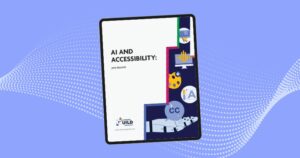Your cart is currently empty!

Forming a Training Mobility Strategy

The current push towards using mobile devices for learning can feellike the first days of home computing. When home computers were firstintroduced, sales people would wax poetic about a household where children didtheir homework without complaint, mother kept her recipes in perfect order, andfather kept immaculate spreadsheets of the family budget. The reality includedchildren playing poor facsimiles of arcade hits while mom and dad fought abouthow they spent ten per cent of the family income on a toy. There appeared to belittle strategy in home computing sales, just a belief that computers were thefuture.
Today, there are promises of employees learning on their smartphones while commuting, and a sales person learning everything there is to knowabout a product moments before meeting a client. Some of this is true, but formost businesses the real value of training mobility may be more complex.
Creating a learning strategy that works whereour people work
I work for a large energy company, and we are currently creating amobile learning strategy that differs from both the sales-based and thededicated-commuter models just described. We are creating the strategy nowbecause many of our employees, regardless of their position, use smartphonesand tablets as part of their daily lives.
The company provides Blackberries so managers and advisors can befully functional away from their desks; training shouldn’t circumvent thatstrategy. More importantly, our operations are built to sustain heavy equipment,construction, and hazardous environments. Traditional training rooms in theseenvironments are rare, yet access to compliance and to health and safetytraining is necessary. In these cases the learning tools must become mobile.
To start forming our strategy we looked for enterprise learning thatmay already be accessible on mobile devices. We recently changed our Standardsof Business Conduct program to solve some accessibility issues from theprevious year. This process also made all the material available through theBlackberry Web browser, allowing mobile employees to register their affirmationwith the program more easily.
What we learned
The simplification of the program reduced support callsdramatically. We’re unlikely to win an award for the program, but the internalclient is happy with the results and the money spent on support is dramaticallyreduced. We didn’t need a new application, we just needed to modify an existingWeb interface to bring immediate value to the company by ensuring content wasaccessible on mobile browsers. This taught us one very valuable lesson aboutmobility. Simplify!
Another part of our discovery phase is to build excitement aroundthe potential of training mobility. We worked with a vendor to create an iPadapplication for our learning advisors. The intention is for the application toact as electronic performance support related to learning design standards andexisting projects. Initial feedback is that the application isn’t deep enoughto act as true electronic performance support but could be used to ensurecontinuity of work from one advisor to another.
This experiment better prepares us to consult with other businessunits on the required depth of electronic performance support. It’s importantto read what we can about mobile learning theory and technology, but real-worldexperience is integral to act as a center of expertise for the rest of thebusiness. The lesson here is: do something.
What happens next
Now that we know a little more about how mobile learning can helpthe business, we are linking the mobile learning strategy to our corporatestrategy. We are putting a required safety course on a tablet that we canprovide to a contractor who arrives at the gate to one of our mining sites.This will allow us to provide training and grant the worker almost immediateaccess to the site, instead of sending the contractor to another location. Weare unlikely to be asked about ROI because we are offering a solution to anexisting problem. Our lesson here is to link our mobile learning strategy toour business concerns. Soft-skill courses may seem like a quick win, but safetyand compliance-based training may be where we find more immediate businessvalue.
Overall our strategy is to simplify, to do something, and to link tothe business. Our mobile learning strategy is in process and we expect it willbe under constant adjustment. However, I’m confident that next year we’ll havesolid examples and standards we can use to work with other departments asdemand builds. We’ll also be further ahead of those who are still discussinghow to implement mobile learning.




